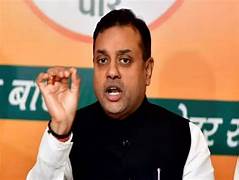Vice President unveiled statues honoring ancient Indian physicians Charaka and Sushruta, revered pioneers of Ayurveda and surgery,
Goa CM Pramod Sawant Said "The unveiling of the statues at Raj Bhavan underscores Goa’s commitment to preserving and promoting India’s ancient knowledge systems."
Published on: May 22, 2025
By: BTI
Location: Goa, India
In a significant cultural and environmental milestone, Goa Chief Minister Pramod Sawant welcomed Vice President Jagdeep Dhankhar to Raj Bhavan for a special event celebrating India’s rich heritage and commitment to sustainability. The Vice President unveiled statues honoring ancient Indian physicians Charaka and Sushruta, revered pioneers of Ayurveda and surgery, respectively. Additionally, he inaugurated the Vaman Vrukshakala Udyan, a unique garden featuring 1008 plants, symbolizing ecological consciousness and cultural pride.
A Tribute to India’s Medical Legacy
Speaking at the event, Goa CM Pramod Sawant highlighted the significance of the occasion, stating, “Today, we welcomed the honorable Vice President Jagdeep Dhankhar to unveil the statues of ancient Indian physicians Charaka and Sushruta. These figures represent the profound contributions of ancient India to global medicine.” Charaka, known for authoring the Charaka Samhita, laid the foundation for Ayurvedic medicine, while Sushruta, often called the “father of surgery,” is celebrated for his pioneering work in surgical techniques documented in the Sushruta Samhita.
The unveiling of the statues at Raj Bhavan underscores Goa’s commitment to preserving and promoting India’s ancient knowledge systems. The event was attended by dignitaries, scholars, and local leaders, who lauded the initiative as a step toward reviving pride in India’s scientific heritage.
Also read- https://www.btnewsindia.com/वट-सावित्री-व्रत-2025-सुहागिन/ https://www.btnewsindia.com/डोंगरगढ़-रेलवे-स्टेशन-22-मई-202/
Vaman Vrukshakala Udyan: A Green Initiative
The highlight of the day was the inauguration of the Vaman Vrukshakala Udyan, a meticulously designed garden housing 1008 plants. CM Sawant described it as “a unique program” aimed at promoting environmental sustainability and cultural symbolism. The number 1008 holds spiritual significance in Indian traditions, often associated with auspiciousness and completeness.
“This garden is not just an environmental initiative but a testament to our commitment to blending tradition with modernity,” Sawant said in a video statement shared on X. The Vaman Vrukshakala Udyan is expected to serve as a model for eco-friendly projects across the state, encouraging biodiversity and green tourism in Goa.
Vice President Dhankhar’s Visit: A Boost for Goa’s Cultural Image
Vice President Jagdeep Dhankhar’s visit to Goa has been hailed as a moment of pride for the state. His participation in the event reflects the central government’s support for initiatives that celebrate India’s cultural and intellectual legacy. The unveiling of the statues and the garden’s inauguration align with broader national efforts to promote Ayurveda and environmental conservation.
Local residents and cultural organizations expressed enthusiasm for the event, with many taking to social media to share their pride. One X user posted, “Goa sets an example by honoring Charaka and Sushruta while embracing sustainability with the Vaman Vrukshakala Udyan. Kudos to CM Pramod Sawant and VP Dhankhar for this visionary step!”
A Step Toward Cultural and Environmental Renaissance
The event has been widely praised as a fusion of cultural reverence and environmental responsibility. Experts believe that initiatives like the Vaman Vrukshakala Udyan could inspire similar projects across India, fostering a deeper connection with nature and heritage. The statues of Charaka and Sushruta are expected to become a point of interest for tourists and scholars visiting Goa, further boosting the state’s cultural tourism.
As Goa continues to balance its identity as a global tourist destination with its rich cultural roots, such initiatives highlight its role as a leader in preserving India’s ancient wisdom while embracing modern ecological values.




